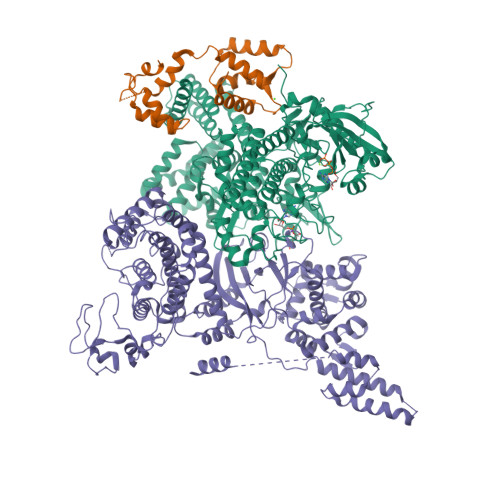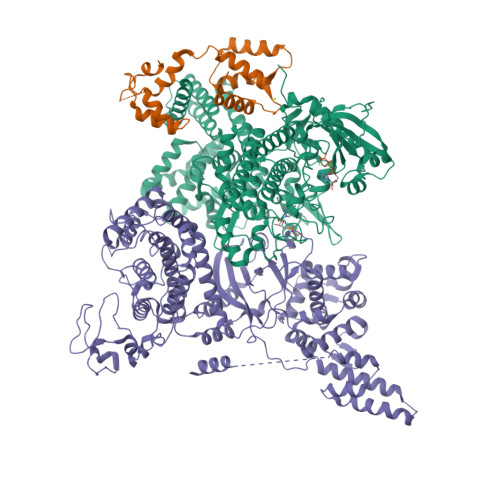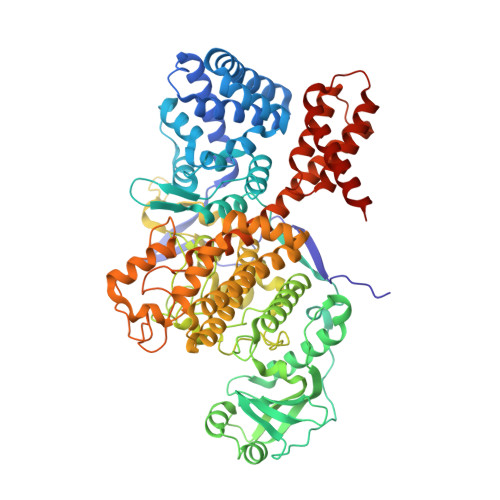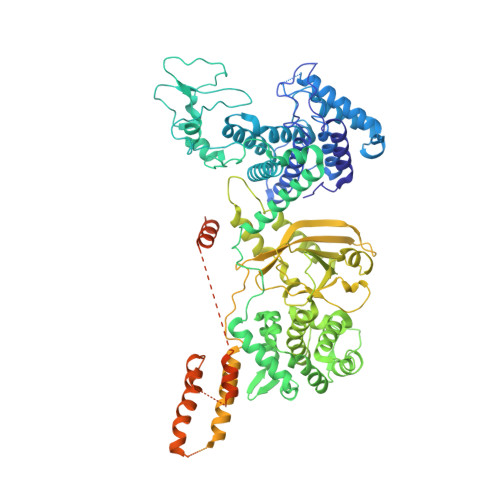Structural and mechanistic basis for protein glutamylation by the kinase fold.
Osinski, A., Black, M.H., Pawlowski, K., Chen, Z., Li, Y., Tagliabracci, V.S.(2021) Mol Cell 81: 4527
- PubMed: 34407442
- DOI: https://doi.org/10.1016/j.molcel.2021.08.007
- Primary Citation of Related Structures:
7MIR, 7MIS - PubMed Abstract:
The kinase domain transfers phosphate from ATP to substrates. However, the Legionella effector SidJ adopts a kinase fold, yet catalyzes calmodulin (CaM)-dependent glutamylation to inactivate the SidE ubiquitin ligases. The structural and mechanistic basis in which the kinase domain catalyzes protein glutamylation is unknown. Here we present cryo-EM reconstructions of SidJ:CaM:SidE reaction intermediate complexes. We show that the kinase-like active site of SidJ adenylates an active-site Glu in SidE, resulting in the formation of a stable reaction intermediate complex. An insertion in the catalytic loop of the kinase domain positions the donor Glu near the acyl-adenylate for peptide bond formation. Our structural analysis led us to discover that the SidJ paralog SdjA is a glutamylase that differentially regulates the SidE ligases during Legionella infection. Our results uncover the structural and mechanistic basis in which the kinase fold catalyzes non-ribosomal amino acid ligations and reveal an unappreciated level of SidE-family regulation.
Organizational Affiliation:
Department of Molecular Biology, University of Texas Southwestern Medical Center, Dallas, TX 75390, USA.

























